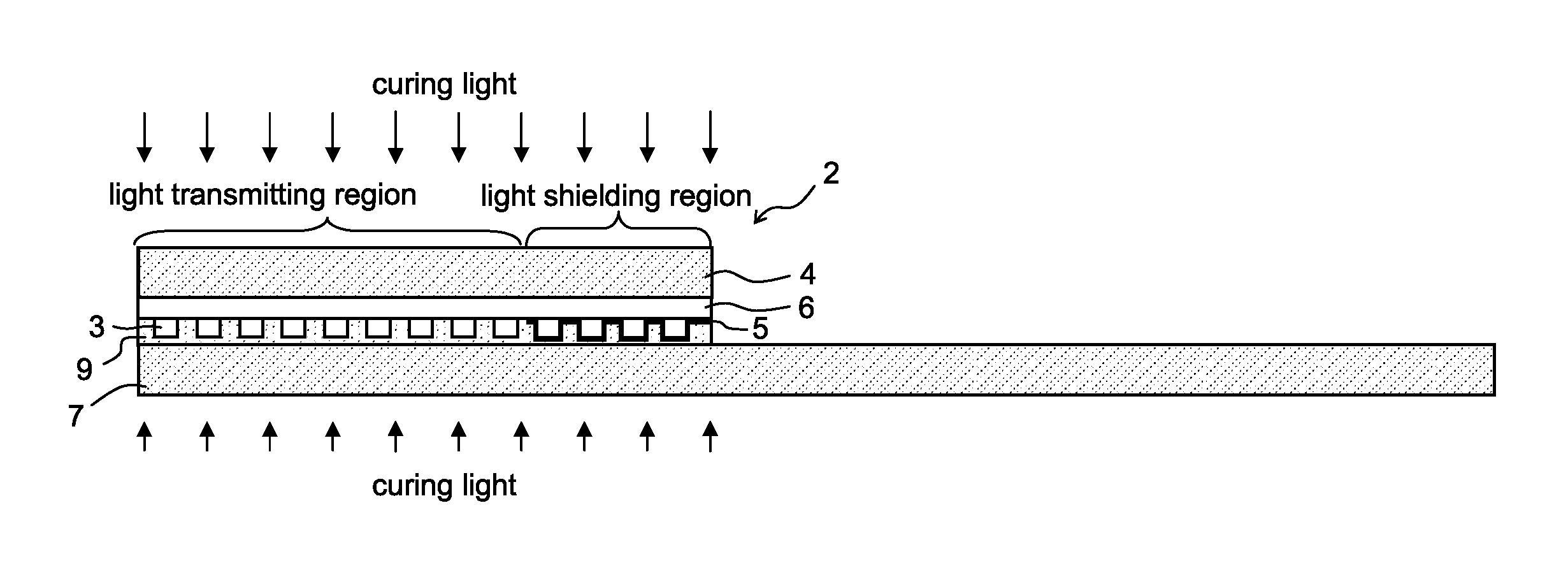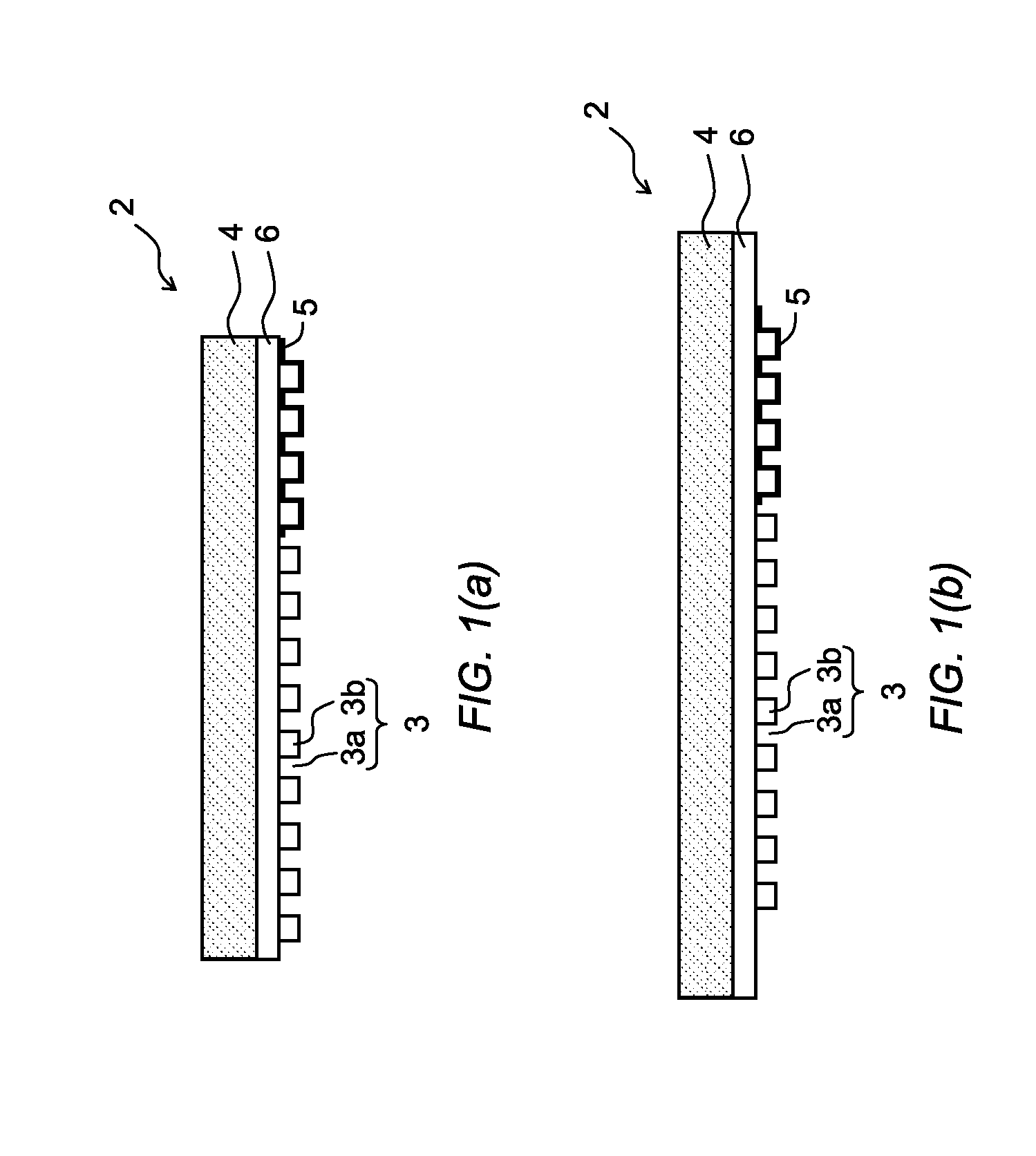Light-transmitting imprinting mold and method for manufacturing large-area mold
a technology of imprinting molds and imprinting patterns, which is applied in the direction of manufacturing tools, photomechanical equipment, instruments, etc., can solve the problems of difficult enlargement of molds with nano-scale fine concave-convex patterns on their surface, high cost, etc., and achieves modest accuracy, easy deformation, and easy deformation
- Summary
- Abstract
- Description
- Claims
- Application Information
AI Technical Summary
Benefits of technology
Problems solved by technology
Method used
Image
Examples
first embodiment
1. First Embodiment
1-1. Light-Transmitting Imprint Mold
[0031]As shown in FIG. 1(a), the light-transmitting imprint mold of the first embodiment of the present invention is a light-transmitting imprint mold 2 comprising a transparent substrate 4 having a patterned region onto which a concave-convex pattern 3 is formed, and a light shielding member 5 provided on the patterned region. Here, the light shielding member 5 is provided at the edge portion of the patterned region so as to cover the concave-convex pattern 3, both of the concave portion 3a and the convex portion 3b being continuously covered. In addition, the surface profile of the light shielding member reproduces the concave-convex pattern 3.
[0032]Such imprint mold 2 can be formed using a known imprint technique. In one example, as shown in FIG. 1(a), the imprint mold comprises a transparent substrate 4, and a transparent resin layer 6 provided on the transparent substrate 4, the transparent resin layer 6 having a desired fi...
second embodiment
2. Second Embodiment
[0059]FIG. 4 shows the light-transmitting imprint mold 2 according to the second embodiment of the present invention. The constitution of the mold 2 is similar to that of the first embodiment, however, the light shielding member 5 attenuates the curing light.
[0060]When such mold is used, as shown in FIG. 5, the photo curing resin 9 is irradiated with the curing light from only the mold 2 side. In the light transmitting region, the curing light transmits the mold 2 as it is. Accordingly, the photo curing resin 9 is irradiated with the curing light. In the light shielding region, the curing light is attenuated by the light shielding member 5. Accordingly, the photo curing resin 9 is irradiated with attenuated curing light. By adjusting the strength of the curing light and the transmittancy of the light shielding member 5, the photo curing resin 9 can be semi-cured. The succeeding step can be conducted in a similar manner as the first embodiment.
PUM
| Property | Measurement | Unit |
|---|---|---|
| thickness | aaaaa | aaaaa |
| thickness | aaaaa | aaaaa |
| pressing pressure | aaaaa | aaaaa |
Abstract
Description
Claims
Application Information
 Login to View More
Login to View More - R&D
- Intellectual Property
- Life Sciences
- Materials
- Tech Scout
- Unparalleled Data Quality
- Higher Quality Content
- 60% Fewer Hallucinations
Browse by: Latest US Patents, China's latest patents, Technical Efficacy Thesaurus, Application Domain, Technology Topic, Popular Technical Reports.
© 2025 PatSnap. All rights reserved.Legal|Privacy policy|Modern Slavery Act Transparency Statement|Sitemap|About US| Contact US: help@patsnap.com



